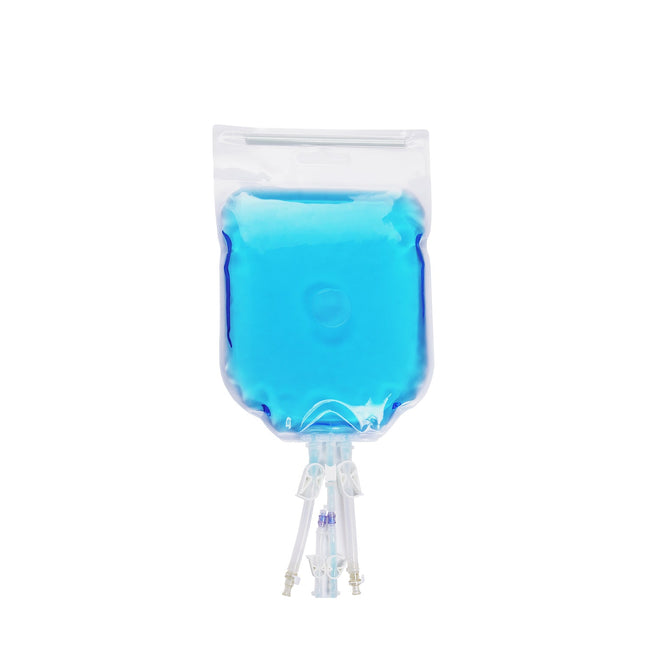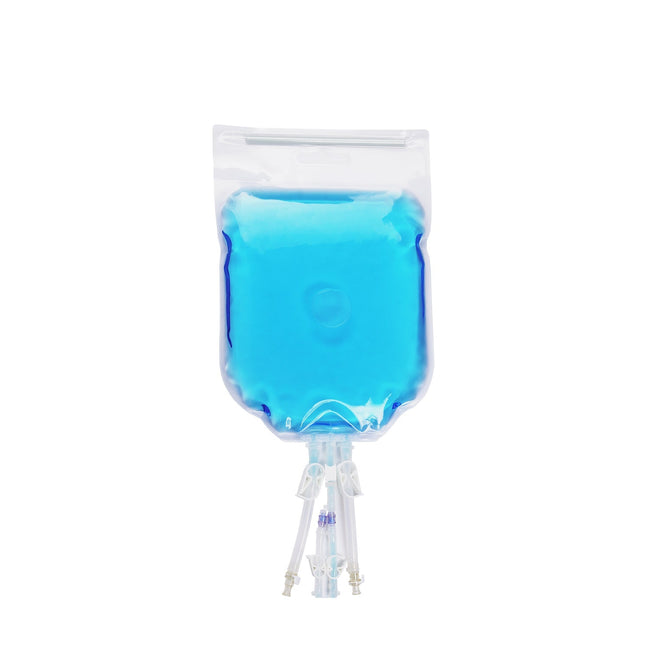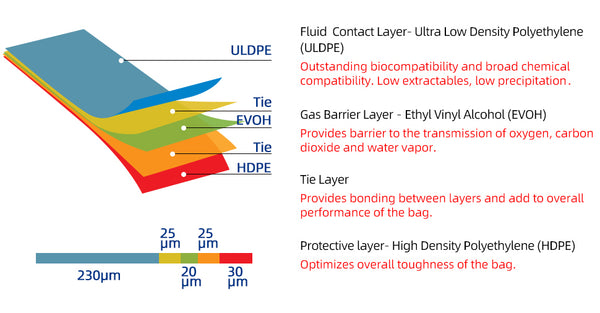Q: What are the applicable conditions for the use of storage bags?
1. Liquid collection, liquid storage, liquid transport, sampling of liquids during the production process, such as media storage, buffer storage, collection of filtered liquids, buffer filling, and so on.
2. The recommended temperature range is -80°C to 60°C, pH range is 2.5-11.
3. Maximum filling capacity is 110%.
Q: What are the applications of storage bags?
Storage bags are commonly used in various industries such as pharmaceuticals, blood products, and medical aesthetics. They are used in processes involving liquid collection, storage, transfer, and sampling. Some examples include storage of culture media, buffering solutions during purification processes, collection of filtered liquids, and filling of buffers.
Q: What is the sterilization method for single-use storage bags? How can you determine if sterilization has been achieved? What’s the shelf life of the sterilized bags?
1. Cobetter Single-use products, including storage bags, mixing bags, custom assembly tubing, and single-use capsule filters, are all sterilized by gamma irradiation, typically with an irradiation intensity of 25-45 kGy.
2. Sterilization is identified by the color change of the irradiation label on the outer packaging box. The label is orange before irradiation and turns deep red after irradiation.
3. The shelf life of sterile bags is 2 years.
Q: How are Cobetter's single-use bags packaged and transported? For 2D & 3D storage bags and mixing bags of different volumes, how many are packed in each box?
1. The bags will be evacuated and folded, then packaged in double-layer PE bags and placed in different-sized cardboard boxes for gamma irradiation.
2. For 2D, 3D storage bags, mixing bags, custom tubing, and other products, the packaging size varies depending on the complexity of the product design, and there is no fixed quantity per box. It can range from one to several dozen bags per box.
Q: How to choose the material of the tubing on the storage bag? What are the applicable conditions?
1. Materials: Silicone and thermoplastic elastomer (TPE).
2. Silicone tubing: Used for fluid transfer, peristaltic pump applications, and filling processes.
Disadvantage: Not resistant to strong alkalis.
3. Thermoplastic elastomer (TPE) tubing: Used in combination with tube sealing machines/connector machines for aseptic disconnecting/aseptic connecting operations. Disadvantage: Not resistant to high temperatures and can be easily worn out when used with peristaltic pumps.
Q: How to install the storage bag?
Please refer to Cobetter "Instructions for Use of Single-use Products".
Q: Response regarding freezing and storage of storage bags.
1. The filling volume should be at about 50%; not too much.
2. Use suitable containers for storage.
3. Avoid stacking the bags.
4. The temperature should not be lower than -80°C. If it is at room temperature, there is no need to consider the problem of loading.
Q: Will a single-use system that has been irradiated have any impact on the product? Can irradiation residues be detected in the irradiated items?
No. The irradiation dose is validated to ensure sterilization effectiveness. Moreover, the irradiation process only involves energy absorption and does not involve direct contact with the radiation source. Therefore, there are no issues of irradiation residues in the disposable system.
Q: Customers have reported that the bags are too tight and difficult to allow liquid to enter or exit. What can be done?
This issue is commonly observed in 100mL and smaller 2D bags and is a common occurrence across manufacturers. It is not a quality issue but rather a result of minimal gas inside the bag.
We recommend manually squeezing the bag or adjusting the liquid level difference. If the issue persists, we suggest adding a vent filter.
Q: Can various special-shaped or designed storage bags be made?
The feasibility of processing, usage risks, and other factors need to be comprehensively evaluated. Please contact us for further evaluation.
Q: What is the difference between 2D storage bags and cryopreservation bags made from the same film?
Cryopreservation bags have simpler tubing configurations compared to 2D storage bags because many commonly used connectors are not suitable for low temperatures. The aim is to minimize the complexity of customization.
Additionally, cryopreservation bags need to be fixed to trays for protection and to reduce the risk of rupture during movement at low temperatures.
Q: What is the lowest temperature tolerance for cryopreservation bags made from EVA film?
Cryopreservation bags made from EVA film can withstand low temperatures of liquid nitrogen, with a tolerance of up to -196 ℃. This product is currently under development.
Q: How should storage bags be transported?
Generally, bags with a capacity of 20L or less can be hung or carried by hand for transportation. However, for bags larger than 20L, it is recommended to place them on pallets or flatbed carts for transferring.
Q: Does the outer layer of KA film, with stronger hardness, become more brittle under low-temperature conditions?
Both our KA film and 9101 film have undergone freeze-thaw testing and accelerated aging testing. Our validation guidelines provide actual test results, and there is no difference in freeze-thaw performance between the two films under low-temperature conditions.
Q: What is the role of the adhesive layer in the film material?
Our inner fluid contact layer is ULDPE belongs to non-polar materials, gas barrier layer is EVOH belongs to polar materials, according to the principle of similarity and solubility, these two materials can not direct contact bonding. The bonding layer is used as a transition layer, the material is PE combined some ethylene groups.
Q: How is the chemical compatibility of the bags with certain solvents?
Please refer to the chemical compatibility section in the validation guidelines, where you can also find additional chemical compatibility tables for different applications.



















